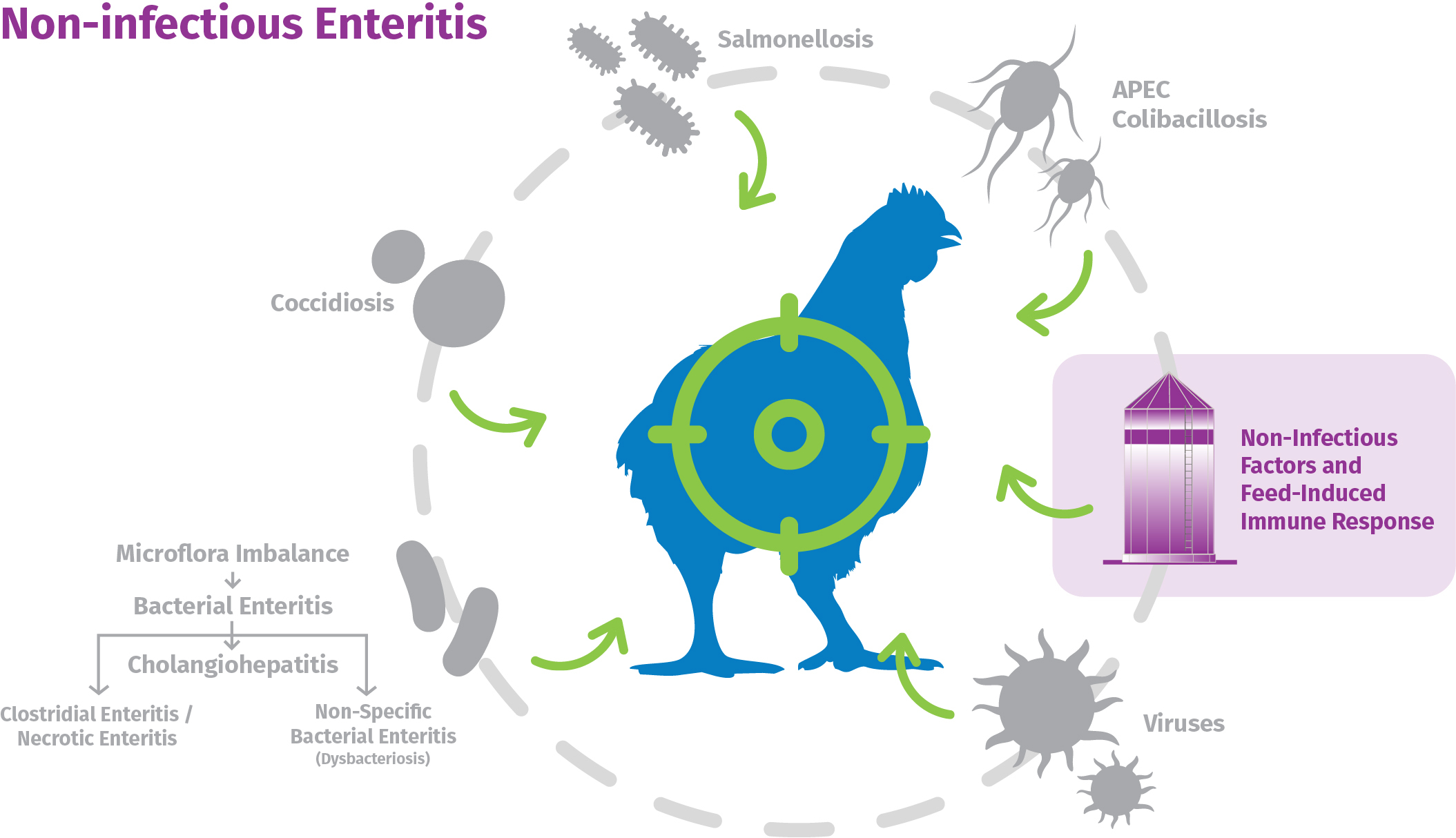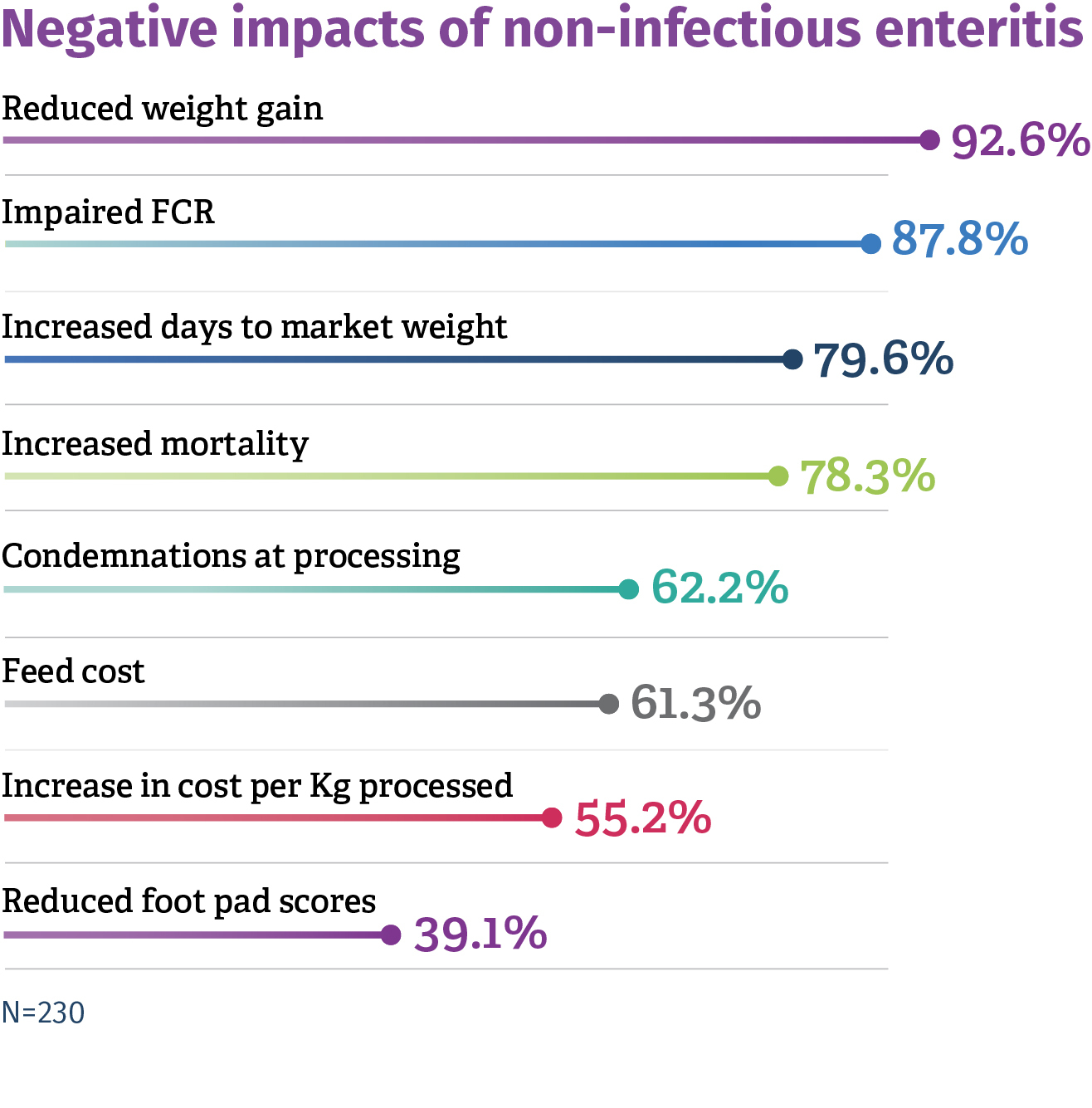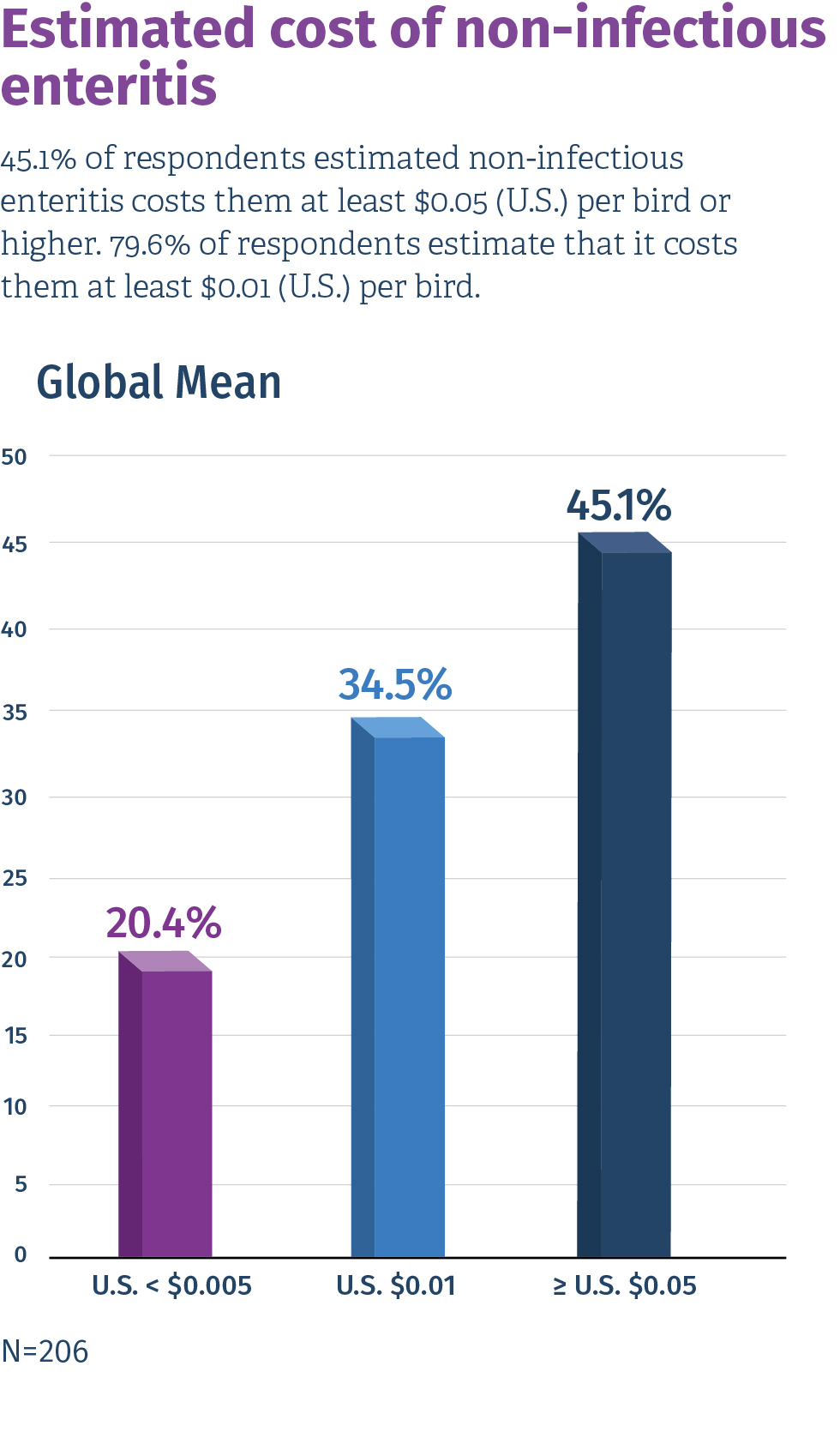



Elanco shares global survey results from first non-infectious enteritis study with industry
Elanco Animal Health initiated a new survey in 2020 to evaluate the impact of non-infectious enteritis in the global poultry industryFollowing two decades of global surveys to better understand bacterial enteritis (BE) and its evolution, Elanco Animal Health initiated a new survey in 2020 to evaluate the impact of non-infectious enteritis in the global poultry industry. The first survey results offer a benchmark to measure bird health and the causes, symptoms, treatments and economic impact of non-infectious enteritis.

“Our ongoing study of bacterial enteritis has taught us so much, but we recognize that we need a more holistic understanding of enteritis to optimize the way in which we understand and therefore manage Intestinal Integrity as a key driver of sustainable poultry production,” said George Gould, Principal Technical Advisor to Poultry Global Marketing at Elanco Animal Health. “Nothing acts in isolation in the gut of a chicken. That’s why it’s so important to capture the survey information. The infectious and non-infectious factors can interact, and one can trigger the other.”
What exactly is non-infectious enteritis?
It’s best explained using examples of non-infectious factors that can harm Intestinal Integrity. They include dietary stressors, nutritional imbalance, feed interruptions, dietary changes, general stressors for birds like lighting patterns, thinning, etc., and issues with raw ingredient quality, endotoxins and mycotoxins.
“The gut microbiome is a highly delicate, balanced population, and that’s when things are going well. If you throw in stressors, it will create significant challenges,” he said. “When a bird becomes stressed, the dynamic of the microbiome changes. We broadly diagnose this as enteritis, but the true root cause of the gut microbiome imbalance can sometimes be difficult to determine.”
The poultry industry has historically been very focused on pathogens like Coccidiosis, Clostridium perfringens and viral challenges. However, it's becoming clear that there are several factors outside of pathogens that must also be managed because they can have a huge impact on health welfare and performance.
Potential factors reducing nutrient bioavailability are non-starch polysaccharides (NSP) found in poultry feedstuffs, including various fiber types such as lignin, β-glucans, arabinoxylans (pentosans), uronic acid, galactose and mannose. The β-glucans are predominantly found in barley and oats, whereas the arabinoxylans are found in wheat, rye, and triticale at higher rates. Certain protein concentrates, especially palm kernel meal, copra meal and guar meal, are among the feedstuffs rich in glucomannans and galactomannans.
Several studies have demonstrated the negative effects of dietary β-mannan found in soybean (hulled or dehulled), copra, guar meals, legumes, and other vegetable-based ingredients such as sunflower seeds. β-mannans impairs the birds´ ability to efficiently utilize the feed and reduces the capacity of the birds to resist stress and possible challenges in the intestinal tract.
Enzyme supplementation of poultry rations has been widely reviewed and well documented to improve efficiency of converting feedstuffs into broiler tissue. Reported benefits include improved weight gain, feed:gain ratio, and metabolizable energy (ME) as well as reduced excreta and P output, water intake, digesta viscosity, and gastrointestinal tract (GIT) size. β-mannanase, an energy sparing enzyme, eliminates its anti-nutritional effect in the intestinal wall and spares these costs while reducing proinflammatory innate immune responses thus enabling the bird to reduce their basal stress level.
What causes non-infectious enteritis?
Environmental factors were ranked as the top cause of non-infectious enteritis by 28.1% of respondents, followed by mycotoxins (27.1%) and stress factors (20.5%). Other causes include feed viscosity and pellet quality, undigested protein, rancid fat and animal byproducts among others.

“These initial findings confirmed some well-established challenges, and it identified some less understood threats,” said Gould. “Over time, I expect more challenges to be added to the list as we learn more about the non-infectious space.”
What does non-infectious enteritis look like on-farm?
There’s no simple answer to what non-infectious enteritis looks like on-farm. Fundamentally, producers know the consequences of enteritis, and regardless of whether it’s infectious or non-infectious it will likely manifest in a broadly similar way and with similar end results.

Survey respondents strongly associate diarrhea, wet litter and feed passage with non-infectious enteritis. More than half of respondents reported these clinical signs, along with changes in feed intake and increased ammonia. Based on this survey and the Bacterial Enteritis Global Impact Assessment (BEGIA), the most common sign of bacterial enteritis and non-infectious enteritis is diarrhea. Other signs common to both are feed passage and a change in feed intake.
When a significant enteritis issue arises on the farm, it requires a deep understanding of the flock challenge. The first step producers should take is to conduct a robust investigation that includes diagnostics and an in-depth look at what’s happening on the farm – what’s recently changed or what challenges have occurred like feed quality or chick quality.
“We often let the birds tell us what’s happening by walking the barn, asking questions of the farm manager and using necropsy as a pathology tool,” Gould explained. “Taking this step ensures you don't leap to a conclusion, rather it helps develop a consensus about what the root problem is before implementing a solution. This typically involves consultation with partners like your veterinarian, nutritionist, feed suppliers and other consultants because it’s unlikely to be just one thing. More often enteritis is caused by multiple factors acting in a complex.”
How can a producer prevent non-infectious enteritis?

The first step to prevention is to understand what the risk factors are at the farm level. Data is a resource that can help producers take a closer look at environment factors, like weather, and find correlations to disease challenges. Next, consider the risk level and consequences of the factors you’ve identified which will help in mitigating them.
Good management practices can help maintain intestinal integrity and prevent the appearance of enteritis problems. Following are practices that help prevent on-farm challenges:
- Deploying feed grade multi-enzymatic systems that were designed for the right substrate profile in a given feeding program
- Use of probiotic products with effective and stable strains that deliver consistent performance and survive feed manufacturing processes and the inherent challenges of the host intestinal tract conditions. Correct formulation is crucial to deliver the right concentration in feed, whether they are intended for competitive exclusion or to address specific pathogenic challenges, such as avian pathogenic E. coli. These products should come from solid R&D programs and be produced in state-of-the-art facilities, with robust quality assurance standards.
- Grains (cereals and legumes) are susceptible to fungal contamination, accompanied by the production of toxic secondary metabolites known as mycotoxins. There are several mycotoxin binding and biotransformation technologies to address the issue once contaminated commodities have reached the end user. Limbikani et al., 2021 shared a short list of steps to provide effective mycotoxin prevention and control strategies in grains:
- Sustaining plant vigor via pest and disease control
- Reducing toxigenic fungal populations in growing plants and storage crops
- Removal of all diseased plant
- Proper disinfections of storage bags and facilities
- Reducing grain moisture swiftly and avoiding rehydration

More than half (53%) of respondents ranked mycotoxin binders as their most frequently used tool for avoiding and preventing non-infectious enteritis, followed by organic acids (48.9%) and in-feed probiotics (43.4%) as their other top tools.
Survey results indicated that in-water probiotics, organic acids and in-feed probiotics are considered the top tools to control non-infectious enteritis.
Economic impact non-infectious enteritis

Reduced weight gain, impaired feed conversion ratio, increased days to market weight and increased mortality were the most prevalent negative impacts of non-infectious enteritis.
“Non-infectious enteritis is clearly recognized by the majority of responders as an economic threat that is costing them in terms of bird performance,” said Marco Martinez Cummer, Global Poultry Nutrition Advisor at Elanco Animal Health. “About 45% of respondents said it was costing them US$0.05 or more per bird, which is similar to the estimated cost of BE. Ultimately, it comes back to the fact that regardless of the cause, the consequences are going to be the same and they are significant to the industry.”










